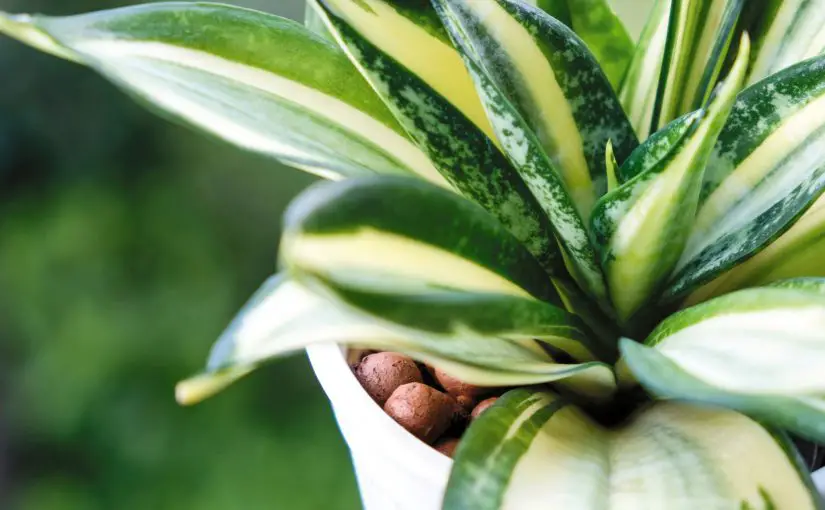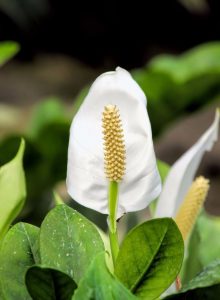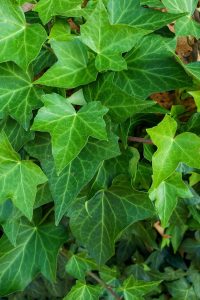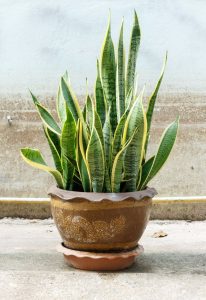 Want to improve your indoor air quality and add some green to your home?
Want to improve your indoor air quality and add some green to your home?
Certain houseplants are natural air purifiers, removing toxins and producing oxygen to create a healthier home environment.
This article features 23 of the top oxygen producing, air purifying plants to clean your air. We’ve compiled tips and details on the best plants to filter out pollutants like formaldehyde, benzene, and trichloroethylene.
You’ll learn which plants produce the most oxygen, which are best for different rooms and times of day, and some quick facts on where these plants get their unique names.
With the right plants, you can easily turn your home into a cleaner, greener, and healthier space.
Let’s take a look at some of nature’s best air-purifying plants and how to successfully grow them in your house or apartment.
Table of Contents
Highest Oxygen Producing Air Purifying Plants
 1.Epipremnum aureum – Devil’s Ivory/Golden Pathos
1.Epipremnum aureum – Devil’s Ivory/Golden Pathos
It’s called devil’s ivy because it’s near impossible to kill and it retains its green color even in the dark.
Golden pathos as it’s also called is a highly oxygenating house plant that according to NASA’s study is natural air purifier responsible for removing such toxic substances as:
Pollutants removed
- Benzene
- Formaldehyde
- Xylene
- Trichloroethylene
 2. Spathiphllum –Peace Lily
2. Spathiphllum –Peace Lily
Peace lily basically means “spoon leaves” in Greek. But it is also become a recognized symbol for the resurrection of Jesus Christ and is popular during the Easter season and funerals.
Peace lily is also a top 10 NASA researched house plant that is responsible for air purification.
Pollutants removed
- Benzene
- Carbon Monoxide
- Formaldehyde
- Xylene
- Trichloroethylene
 Nephrolepis exaltata v. Bostoniesis –
Nephrolepis exaltata v. Bostoniesis –
Boston fern
How did the Boston fern get its name?
Apparently a Floridian nurseryman named John sear loved the look of the common sword fern so much that he sent his friend located in Boston so many that it took on the name Boston fern. Ok then…
Boston fern is a Hardy house plant that makes the list of air purifying plants responsible for removing dangerous gases from the air.
Pollutants removed
- Formaldehyde
- Xylene
 A. Carbadensis –Aloe vera
A. Carbadensis –Aloe vera
Aloe Vera is also called the burn plant because of its medicinal properties that lend it to being good for treating Burns.
It is easily the most popular of all “first aid plants” and there’s not too many of us that don’t at least have a bottle of Aloe Vera sunscreen somewhere.
It also makes the list of highly oxygenating plants that are capable of purifying the air.
Pollutants removed
- Formaldehyde
 Anthurium andraeanum –Flamingo Lily
Anthurium andraeanum –Flamingo Lily
Flamingo Lily or flower is also known as painters palette. It’s striking beauty is its calling card. It’s red pointed leaves almost look like they have been painted with nail polish.
But beauty isn’t everything and flamingo flowers have another allure.
They are one of nature’s top air purifiers.
Pollutants removed
- Toluene
- Formaldehyde
- Xylene
- Ammonia
 Rhapis excelsa – Lady Palm
Rhapis excelsa – Lady Palm
Lady Palm is also called bamboo palm because of its likeness to bamboo.
Lady Palm makes an excellent and elegant house plant that grows best and like to heavy shade. And because of the denseness of it, it also makes a great privacy barrier.
As part of NASA’s indoor air plant plant study, Lady Palm has also been outed for its excellent natural air purification.
Pollutants removed
- Formaldehyde
- Xylene
- Ammonia
 Hedera helix – English Ivy
Hedera helix – English Ivy
The English ivy is called exactly that if you are in North America, but if you are in it’s native environment, it would be called The Irish ivy or the Atlantic ivy.
Ivy is actually a word that means eternity, which can describe the evergreen nature of the English ivy well. It’s popularly known as a climber that can get up to 100 ft tall.
It also lands on NASA’s list of air purifying plants at number one. The top dog.
Pollutants removed
- Formaldehyde
- Benzene
 Sansevieria –Mother-in-law’s tongue / snake plant
Sansevieria –Mother-in-law’s tongue / snake plant
This plant has the most descriptive names that it goes by, and each one describe it very well.
Not only does the plant look like snakes that are being charmed and coming out of a basket, the leaves resemble swords that could fit right in St George’s hand.
Snake plant is one of those house plants that takes care of itself and needs very little attention.
It is also known to release oxygen at night making it a excellent house plant to keep in your bedroom.
Pollutants removed
- Formaldehyde
- Benzene
- Xylene
- Trichloroethylene
 Dracaena Deremensis – Dracaena /Janet Craig
Dracaena Deremensis – Dracaena /Janet Craig
Dracaena is Greek for female dragon, which conjures images of a mythical origin. But the other name that goes by is Janet Craig. Which doesn’t exactly fit into the theme of a mystical fiery dragon.
But Miss Janet turns out to be a excellent house plant to help filter out airborne contaminants in your home.
Pollutants removed
- Formaldehyde
- Xylene
- Trichloroethylene
 Ficus Benjamina – weeping fig
Ficus Benjamina – weeping fig
The Weeping fig gets its name from its sensitive temperament.
The ficus weeping fig is a delicate house plant that does not like to be moved. And when it does get moved, it’s leaves can start falling off like tears.
It is also said that Buddha became enlightened under a fig tree. Who knows?
But what we do know is that it is a excellent oxygenating house plant that can help purify your air.
Contaminants removed
- Formaldehyde
- Benzene
- Trichloroethylene
 Phoenix Roebelenii – Pygmy date palm/Dwarf
Phoenix Roebelenii – Pygmy date palm/Dwarf
Also called the dwarf date palm, the pygmy date is a much shorter palm tree hence the name pygmy which implies smaller.
One interesting feature that dwarf date palms have is what looks to be a pineapple at the base of the palms when it is pruned.
Dwarf date palms have been found to remove toxins from the air including:
- Formaldehyde
- Xylene
 Chlorophytum comosum –Spider plant
Chlorophytum comosum –Spider plant
Spider plant is usually assumed to get its name from the spidery look of the plant. But the actual truth is entirely different.
Spider plant gets its name because it was once believed to be an antidote for spider bites. And not because anyone has ever been cured by a spider plant, but because it is easily mistaken for another plant, St Bernard’s Lily, that does have a history of being used as a treatment for spider bites…
Spider plants are one of the easiest plants to take care of which makes it a great house plant for beginners.
It also makes NASA’s list of natural household air purifiers with the capacity to filter:
- Formaldehyde
- Xylene
 Ficus elastica – rubber plant
Ficus elastica – rubber plant
Rubber plan is another plant that you may assume that gets its name from the rubbery look of its leaves. Nope.
Rubber actually refers to the sap of the rubber plant that has a history of being used for making rubber.
One of the more striking plants, it can reach the ceiling within a few years with regular pruning.
As a indoor air purifying plant, it is able to help remove airborne contaminants like:
- Benzene
- Formaldehyde
- Xylene
- Trichloroethylene
 Dypsis lutescens- Butterfly Palm/ Areca palm
Dypsis lutescens- Butterfly Palm/ Areca palm
The Areca palm there’s also called a butterfly Palm which gives a hint to how it is named. Its name is a reference to how it’s leaves bend upwards and flare around creating a butterfly look.
As part of NASA’s 50 household plants researched for their air purification qualities, Areca/ butterfly Palm is a large house plant that came in at the top of the list.
Contaminants removed
- Carbon Monoxide
- Benzene
- Formaldehyde
- Xylene
- Trichloroethylene
 Aglaonema modestum – Chinese evergreen
Aglaonema modestum – Chinese evergreen
Chinese evergreen is considered to be a good luck plant in its native China.
It is also called painted drop tongue or Silver Queen. Both which refer to its Silvery painted leaves with a green border.
Chinese evergreen makes an excellent apartment house plant because of it’s need of low-level light and it’s capacity as a natural air purifier.
Contaminants that the Chinese evergreen removes are:
- Formaldehyde
- Xylene
 Chamaedorea Seifrizii – Bamboo palm
Chamaedorea Seifrizii – Bamboo palm
Bamboo palm resembles bamboo at the stems with rings around the trunk thus giving it it’s simple descriptive name. It’s leaves or distinctively deep green which give it a tropic foliage appearance.
Though not hard to take care of, they can easily outgrow you and get up to 12 ft tall.
As a natural air purifier, bamboo palm can filter the following airborne contaminants:
- Benzene
- Formaldehyde
- Trichloroethylene
 Philodendron
Philodendron
Philodendron goes by the name “Philodendron”. Who needs a nickname?
Philodendron is a beautiful plant with large imposing leaves. It also could be considered a “mothering” plant because it produces cataphylls that are leaves that are modified to protect new forming leaves.
It is one of NASA’s top 50 plants for removing formaldehyde in the home.
 Chrysanthemums Mums
Chrysanthemums Mums
Chrysanthemums are known for their exquisite beauty and in some cultures symbolize long life and rebirth, but in some parts of Europe they symbolize death. And are only used and given out is a symbol of grief or bereavement.
With more heritage than your average floral, they have also become known as one of the best natural air purifiers for your home.
Keeping chrysanthemums around can help reduce airborne pollutants like:
- Ammonia
- Benzene
- Formaldehyde
- Xylene
 Ananas Comosus Pineapple plant
Ananas Comosus Pineapple plant
Pineapple, neither a pine or an apple. It’s actually a group of berries that have amalgamated. Pineapple plant can take up to 2 years to create one single pineapple.
The pineapple plant absorb CO2 and releases oxygen at night. This capacity to increase air quality at night has made it a “miracle cure” for snoring.
And if you’re lucky enough to live in a high altitude, you may eventually enjoy a slice of pineapple after you’ve had a good night’s sleep.
 Nephrolepis obliterata –Kimberly Queen fern
Nephrolepis obliterata –Kimberly Queen fern
Kimberly Queen fern also goes by the name Australian sword fern and as you may have guessed it originates in Australia. Kimberly Queen is merely the trade name for the species.
Kimberly Queen fern grows best in high humidity so it’s capacity to reduce airborne pollutants that can be greater in areas with high humidity, make it not only a beautiful fanning plant but a excellent natural indoor air purifier.
Contaminants removed
- Benzene
- Formaldehyde
 Gerbera Jamesonii -Gerbera Daisy
Gerbera Jamesonii -Gerbera Daisy
The Cabrera Daisy gets its name after a naturalist in the 1970s named Traugott Gerber. Who named after the German botanist, it was actually hey Scott’s man named Robert Jameson that was responsible for discovering the flower.
Gerbera daisies are not only bright and colorful they are great for filtering your air and release their oxygen at night.
Air pollutants removed
- Benzene
- Trichloroethylene
 Crassula ovata- Money Plant
Crassula ovata- Money Plant
The origins of how money plant gets its name range from the leaves look like silver dollars to the belief that the plant brings you luck which in turn brings you wealth.
Also called the jade plant, money plant absorbs CO2 and releases oxygen at night. It is also a NASA researched air purifier that can reduce chemicals like:
- Benzene
- Formaldehyde
- Xylene
- Toluene
 Orchidaceae –Orchid
Orchidaceae –Orchid
How did the orchid get its name? A little shocking.
The story goes that Orhis in Greek mythology was the son of a nymph and a satyr. On the occasion of a festival of Dionysus, he became belligerently drunk and attempted to rape a priestess. For this, the God’s turned him into a flower.
Orchids absorb carbon monoxide at night and release oxygen as well as filters xylene from the air.
Making them an excellent plant for your bedroom. Does that mean that Orchis was repentant and decided to become a giver instead of a taker?
| Highest Oxygen Producing Plants | Plants that Release Oxygen at Night | Indoor Plants that Clean the Air and Remove Toxins |
|---|---|---|
| 1. Peace Lily | 1. Peace Lily | 1. Devil’s Ivory |
| 2. Aloe Vera | 2. Spider Plant | 2. Peace Lily |
| 3. Mother-In-Law’s Tongue | 3. Orchid | 3. Boston Fern |
| 4. Areca Palm | 4. Snake Plant | 4. Aloe Vera |
| 5. Gerbera Daisy | 5. Flamingo Flower | |
| 6. Rubber Plant | 6. Lady Palm | |
| 7. Weeping Fig | 7. English Ivy | |
| 8. Chrysanthemums | 8. Snake Plant | |
| 9. Dracaena | ||
| 10. Weeping Fig | ||
| 11. Dwarf Date Palm | ||
| 12. Spider Plant | ||
| 13. Rubber Plant | ||
| 14. Areca Palm | ||
| 15. Chinese Evergreen | ||
| 16. Bamboo Palm | ||
| 17. Philodendron | ||
| 18. Chrysanthemum | ||
| 19. Pineapple Plant | ||
| 20. Kimberly Queen Fern | ||
| 21. Gerbera Daisy | ||
| 22. Spider Plant | ||
| 23. Money Plant | ||
| 24. Orchid |
FAQ
1. What are some of the best air purifying plants?
Some top air purifying plants are peace lily, snake plant, aloe vera, English ivy, and philodendron. NASA research has shown these are very effective at removing pollutants like formaldehyde, benzene, and trichloroethylene from indoor air.
2. Which plants are best for bedrooms?
The best plants for bedrooms are those that release oxygen at night like peace lily, spider plant, orchid, and snake plant. Having these plants in the bedroom improves air quality while you sleep.
3. Do all houseplants purify air?
No, not all houseplants are effective air purifiers. Some great air purifying plants are ferns, palms, peace lilies, aloe vera, and rubber plants. Choosing plants from NASA’s list of top air purifiers ensures you get plants that actively filter toxins.
4. Where should I place air purifying plants?
Place air purifying plants in rooms where you spend a lot of time, like living rooms, kitchens, and bedrooms. Grouping several plants together boosts their air cleaning power.
5. How often should I water air purifying plants?
Watering depends on the specific plant and conditions in your home. Check each plant’s soil before watering and water when the top inch is dry. Most indoor plants need watering every 1-2 weeks.
6. Should air purifying plants be kept in sunlight?
Most air purifiers thrive in bright, indirect light. Some, like snake plants and orchids, tolerate lower light. Avoid direct hot sunlight, which can scorch leaves.
7. Can air purifying plants be harmful to pets?
Some plants like aloe vera and orchids are pet safe, but others like peace lily are toxic for cats and dogs. Check toxicity before bringing a new plant home if you have pets.
8. What’s the best air purifying plant for a small apartment?
Snake plants, spider plants, and philodendron are compact, tolerate low light, and efficiently purify air, making them great choices for small spaces.
9. Should air purifying plants be kept indoors or outdoors?
These plants are intended for indoor use to purify and enhance home air quality. You can place them outside for summer but bring them back in before temps drop below 65°F.
10. How often should indoor air purifying plants be fertilized?
Fertilize every 2-3 months in spring and summer with a balanced liquid fertilizer diluted to half strength. Don’t fertilize in fall and winter when plants are dormant.
11. What are the easiest air purifying plants to care for?
Some of the easiest air purifying plants are philodendron, pothos, spider plant, bamboo palm, peace lily, and snake plant which adapt well to indoor conditions with minimal care.
12. Should I get air purifying plants as cut flowers or potted plants?
Get air purifying plants as potted, live plants. Cut flowers don’t actively purify air and live longer in soil where they can grow larger to increase air cleaning capacity.
13. How many air purifying plants should I get for my home?
Get at least 1-2 plants per 100 square feet. The more plants, the better the air purification. Aim for 5-10 plants in a standard 1,000 square foot home for significantly cleaner air.
14. Do air purifying plants remove odors?
Yes, many air purifying plants help remove odors like formaldehyde, benzene, and trichloroethylene that pollute indoor air. Plants help create cleaner, fresher indoor air.
15. Do air purifying plants increase humidity?
As plants release water vapor through their leaves, called transpiration, they can increase humidity levels slightly. This helps counteract the dry air caused by heating and air conditioning.
16. Can air purifying plants make me sick?
No, air purifying plants improve air quality by reducing pollutants. They don’t release any toxic compounds. Ensure plants are pest and disease free and properly cared for.
17. Do air purifying plants reduce CO2 at night?
Yes! Plants switch to taking in carbon dioxide and releasing oxygen at night, reducing CO2 levels in your home while you sleep.
18. Do air purifying plants require special care?
Air purifiers don’t require special care beyond their individual water, light, and fertilization needs. Ensure pots have drainage holes and use well-draining soil.
19. Where can I buy air purifying plants?
You can find a great selection of air purifying plants at your local garden center, nursery, or hardware store. Many big box stores and online retailers also carry them.
20. Are air purifying plants safe for children and pets?
Many air purifiers like bamboo palm, orchid, and aloe vera are non-toxic for kids and pets. Check plant toxicity before bringing a new plant home or keep them out of reach of children and animals.
21. Is Gerbera Daisies Pet Safe?
Yes, Gerbera daisies are pet safe. They are non-toxic to cats, dogs, and other pets, making them a popular choice for pet owners who wish to add a splash of color to their home without risking their pets’ health. However, while they are safe, it’s always best to prevent pets from ingesting plants, as it can sometimes lead to digestive upset or other mild symptoms.




























